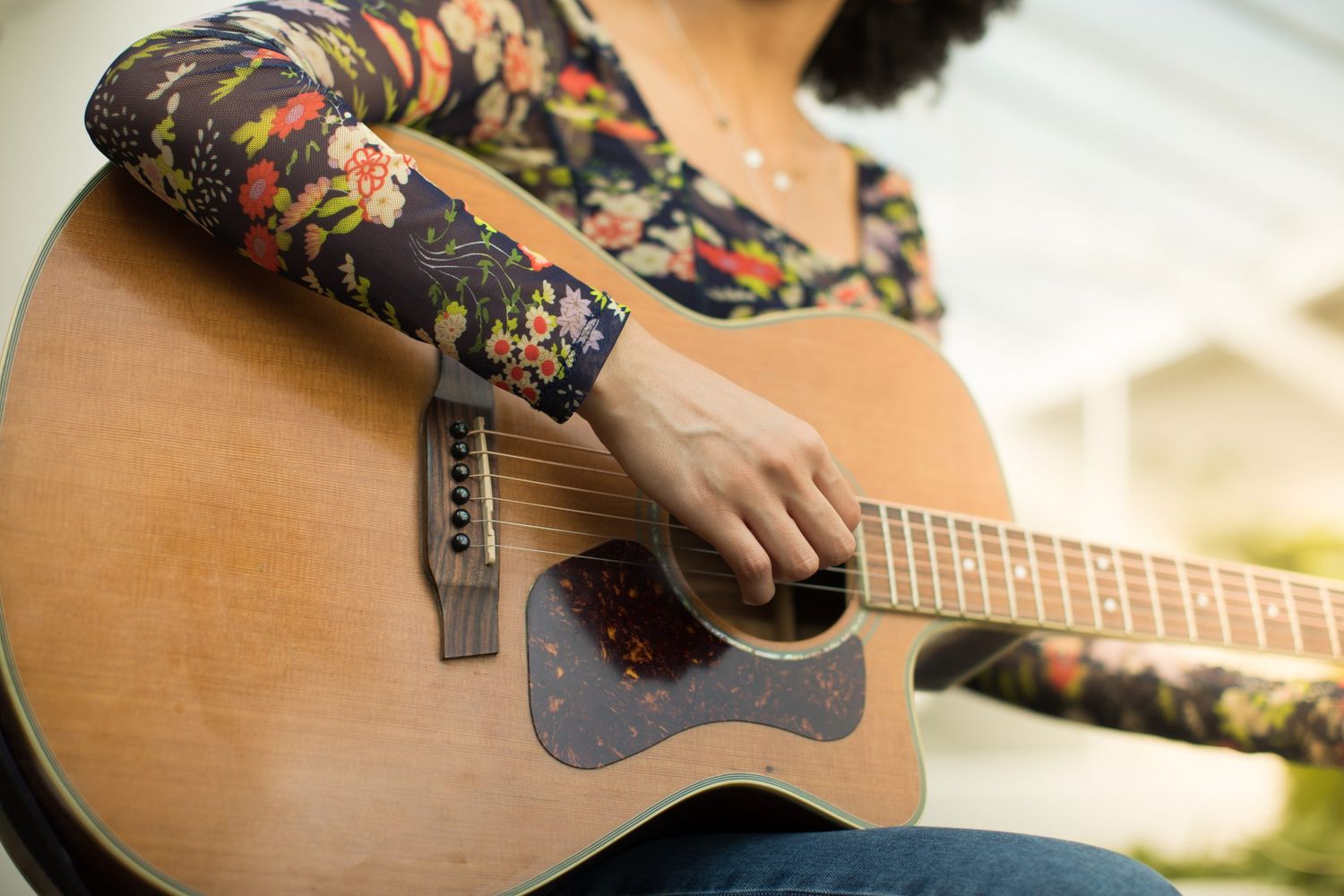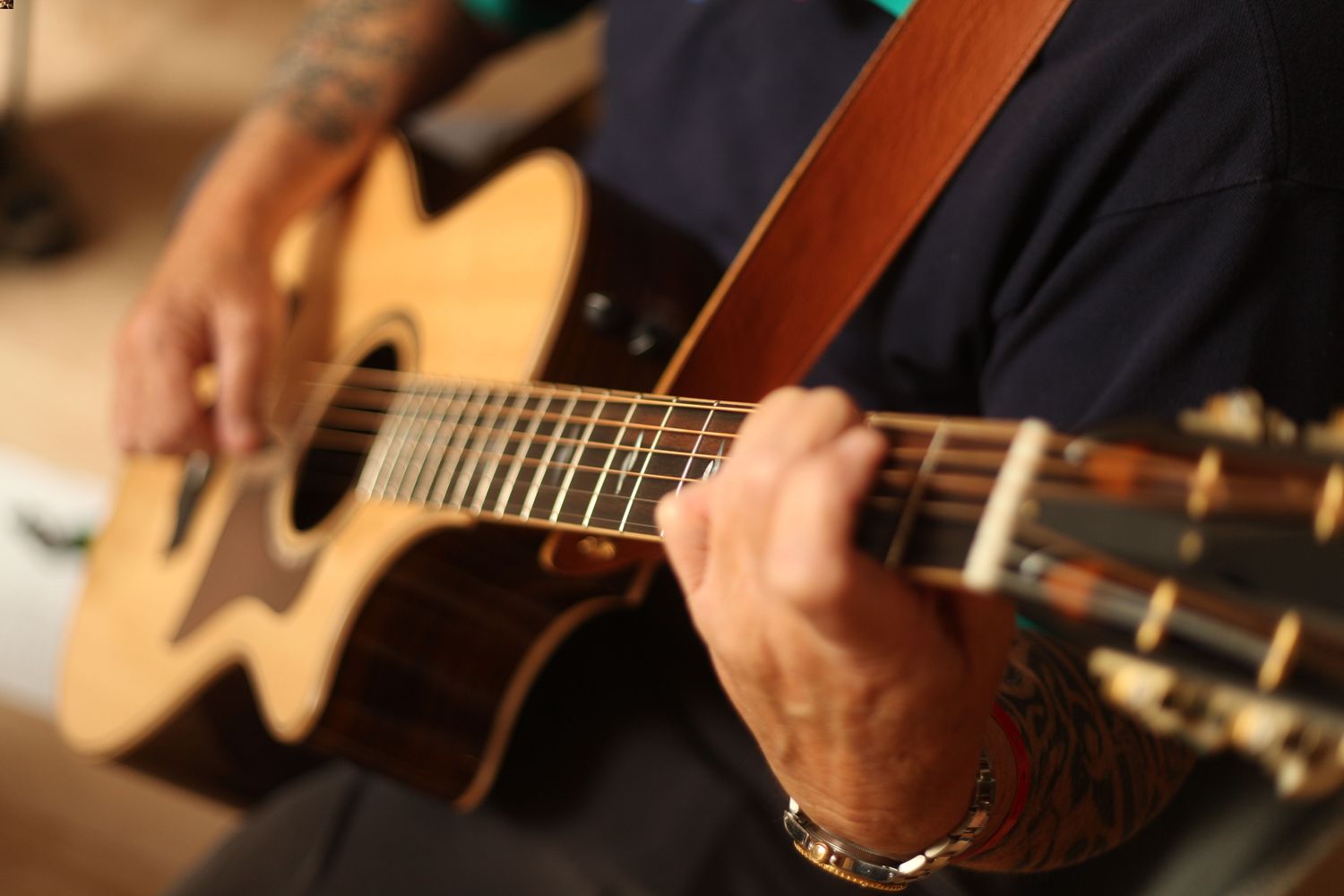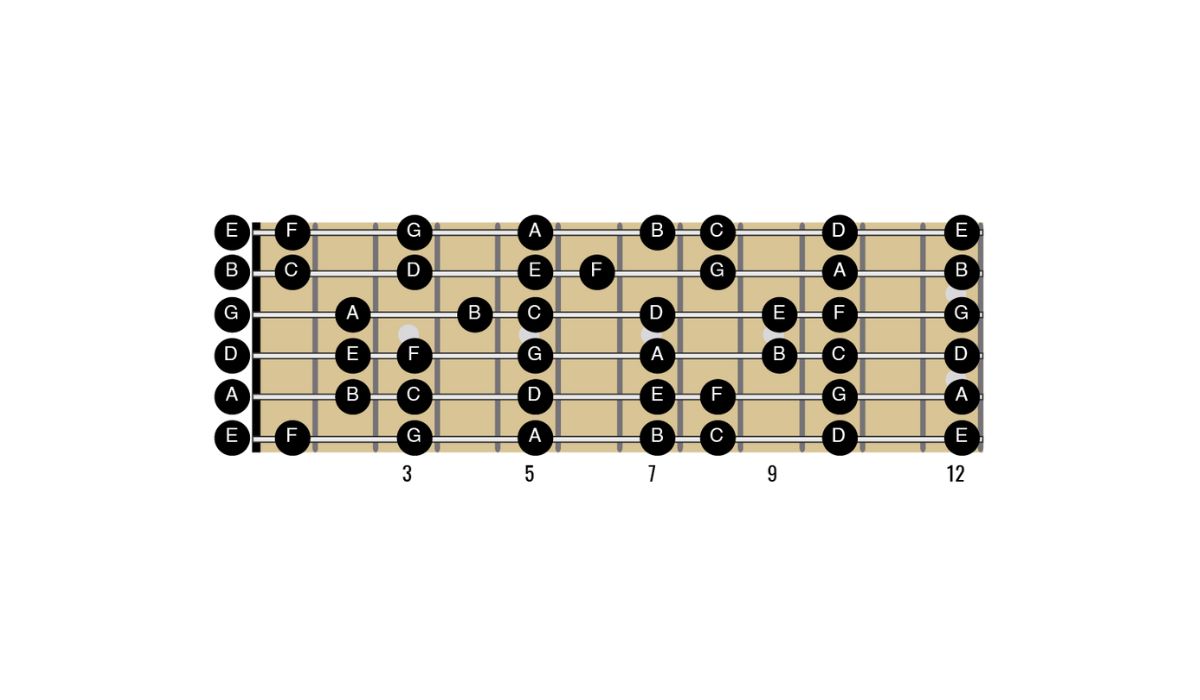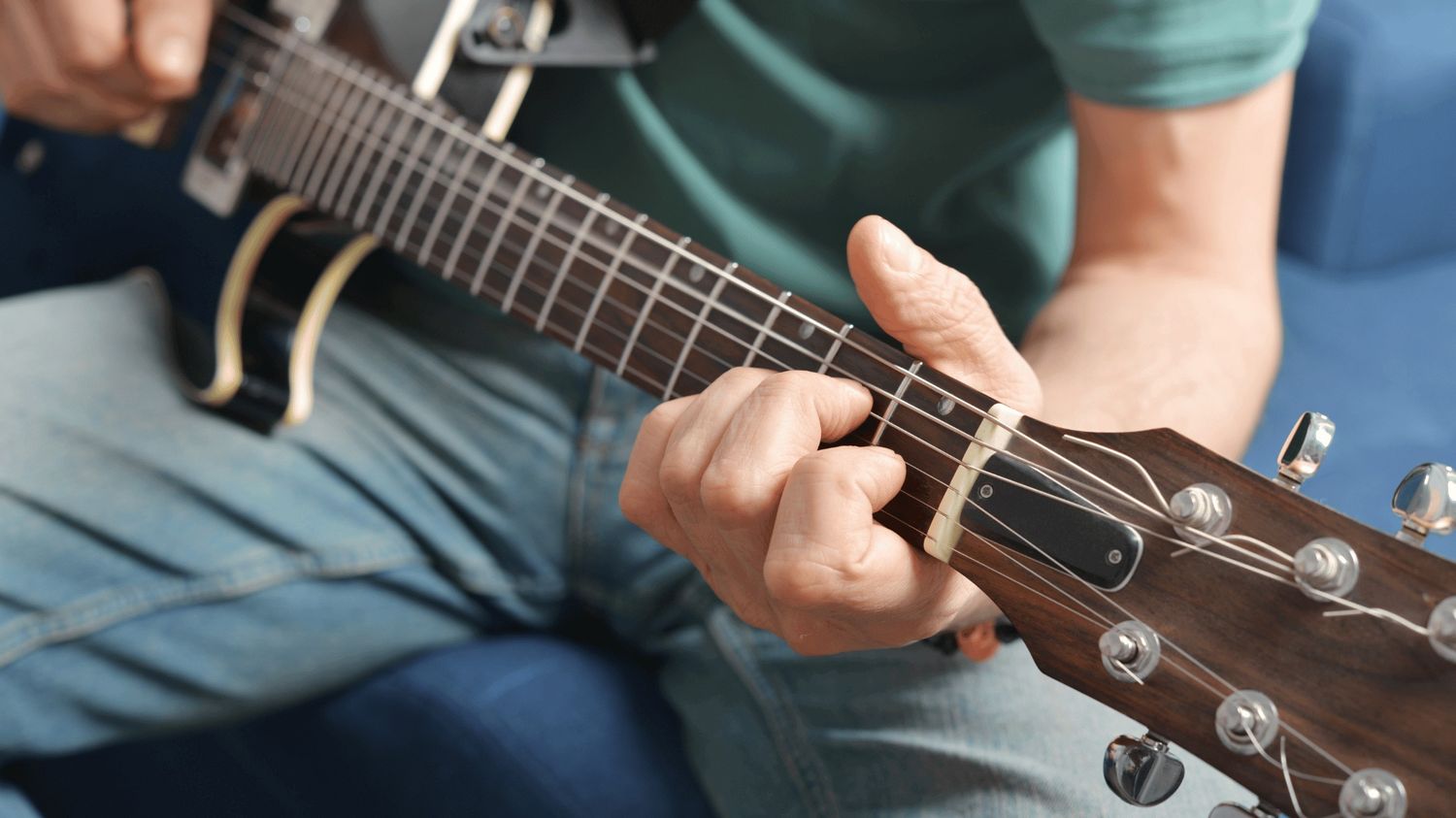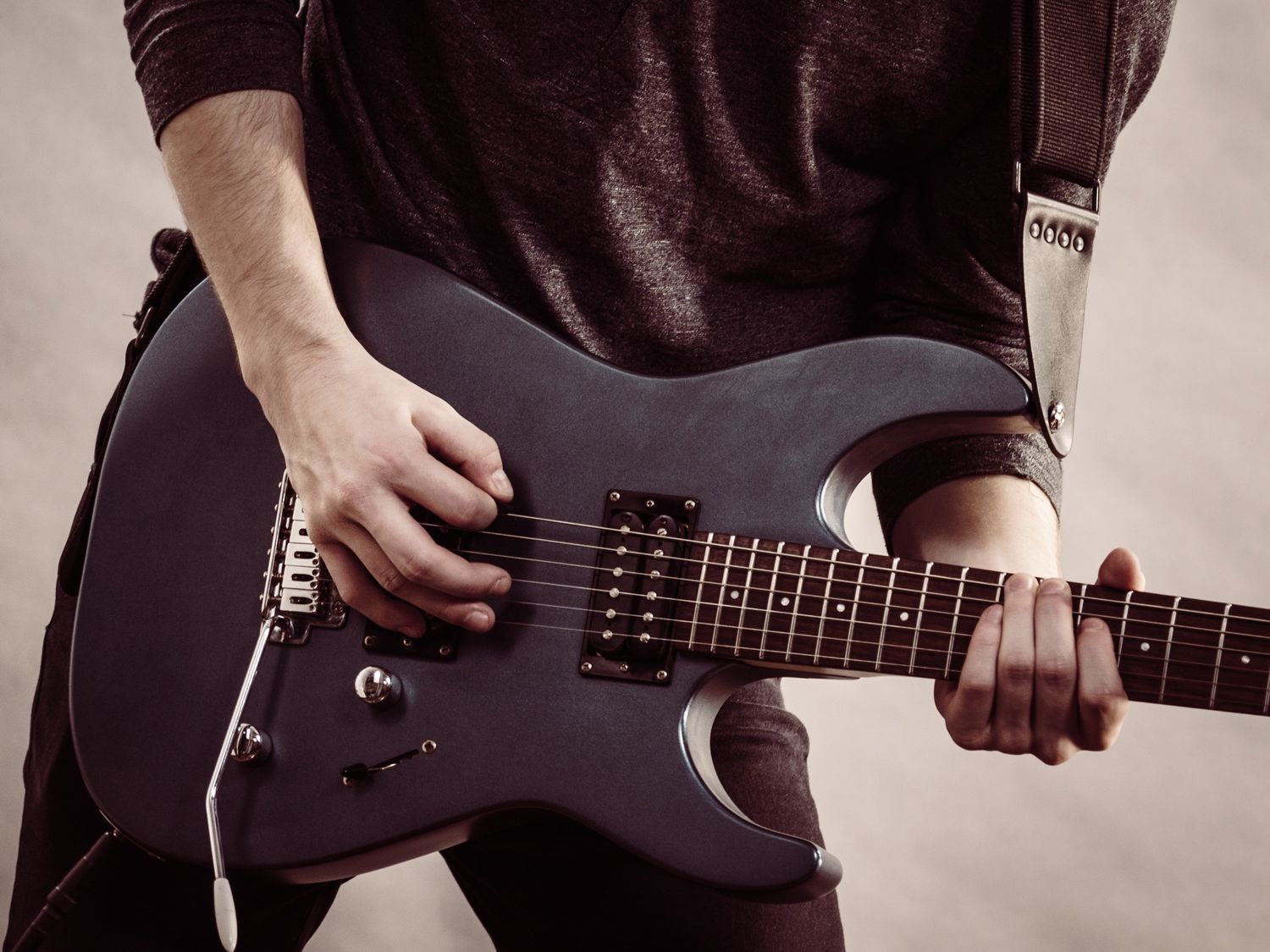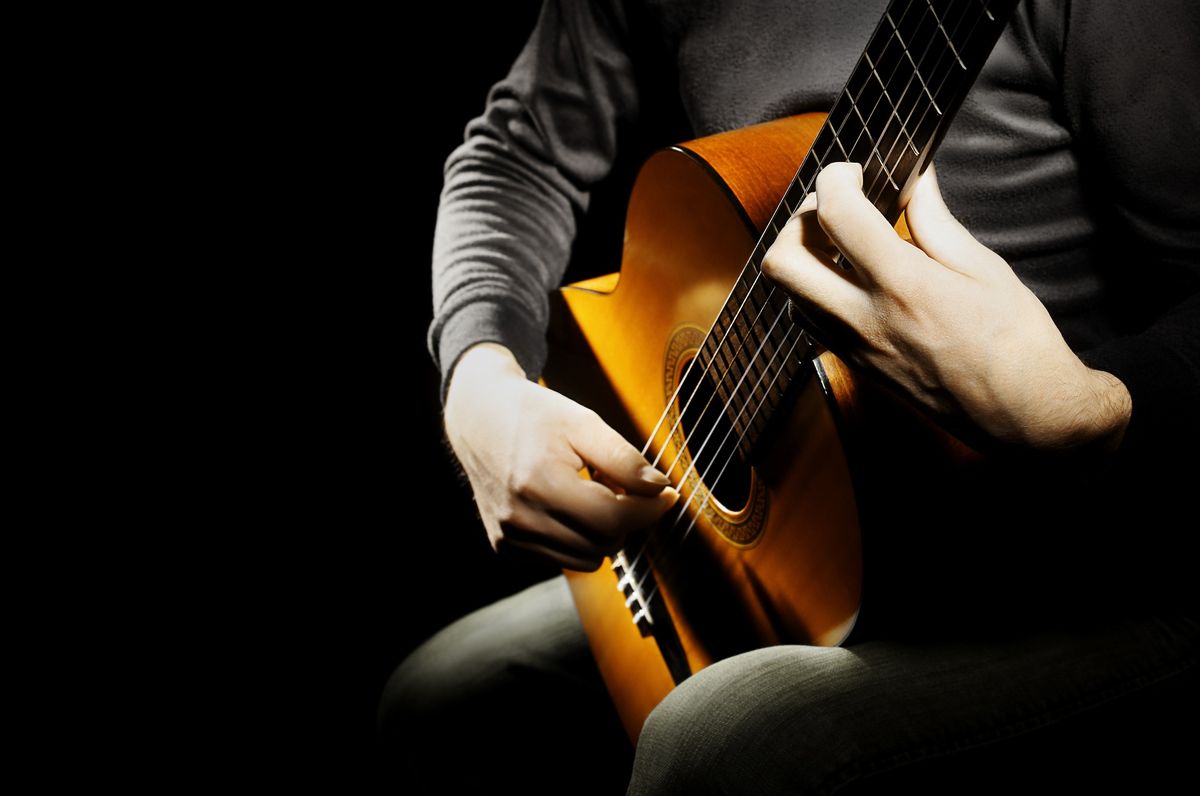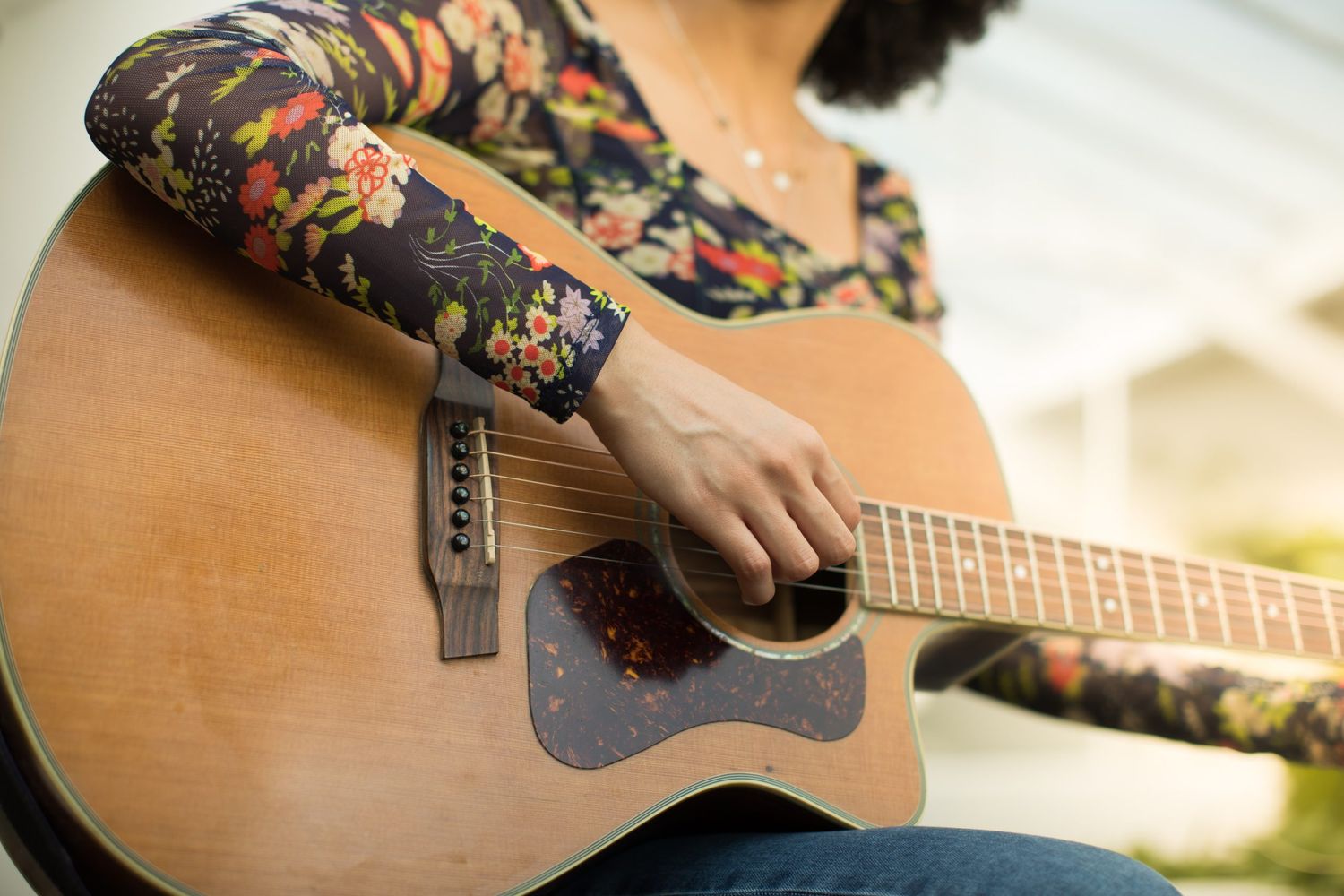Home>Instruments>Guitar>How To Play Em On Guitar
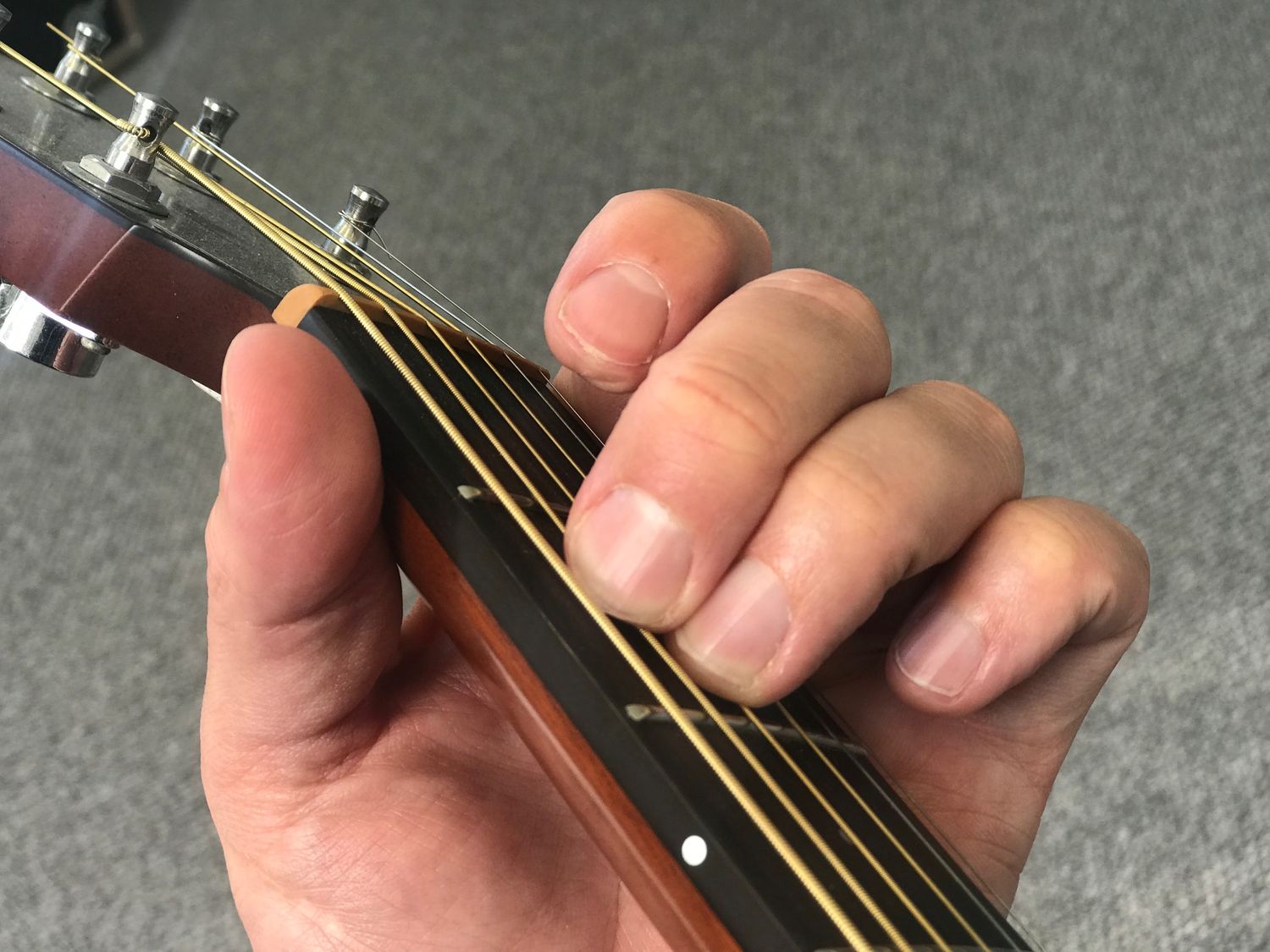

Guitar
How To Play Em On Guitar
Published: February 13, 2024
Learn how to play E minor chord on guitar with our step-by-step guide. Master the basics and start playing your favorite songs today!
(Many of the links in this article redirect to a specific reviewed product. Your purchase of these products through affiliate links helps to generate commission for AudioLover.com, at no extra cost. Learn more)
Table of Contents
Introduction
Welcome to the fascinating world of guitar playing! Whether you’re a beginner or an experienced musician, mastering the art of playing the guitar is an incredibly rewarding journey. In this comprehensive guide, we’ll delve into the intricacies of playing the “Em” chord on the guitar. The “Em” chord, also known as E minor, is a fundamental chord that forms the basis of countless songs across various genres.
Learning to play the “Em” chord opens the door to a wide array of musical possibilities, allowing you to strum along to your favorite tunes, create captivating melodies, and even delve into the realm of improvisation. As we embark on this musical exploration, we’ll cover everything from the basic finger placement for the “Em” chord to advanced techniques such as fingerpicking and playing intricate riffs. By the end of this guide, you’ll have a solid understanding of how to play the “Em” chord with finesse and creativity.
So, grab your guitar, tune those strings, and let’s dive into the enchanting world of playing the “Em” chord on the guitar!
Basic Chords
Before delving into the specifics of playing the “Em” chord, it’s essential to familiarize yourself with some basic chord theory. Chords are the building blocks of music, comprising a combination of notes played simultaneously to create harmonious sounds. As a guitarist, mastering basic chords forms the foundation for more complex musical endeavors.
The “Em” chord is a member of the E minor chord family, and it consists of the following notes: E, G, and B. To play the “Em” chord, place your second and third fingers on the second frets of the A and D strings, respectively, while leaving the rest of the strings open. Ensure that your fingers are positioned close to the frets to produce clear and resonant notes. Strum all six strings, and you’ll hear the melancholic yet captivating sound of the E minor chord.
As you acquaint yourself with the “Em” chord, it’s beneficial to explore other basic chords such as the E major, A minor, and D major chords. Practice transitioning between these chords to develop dexterity and muscle memory in your fretting hand. Additionally, familiarize yourself with chord charts and diagrams, which visually represent the finger placements for various chords. This visual aid can significantly aid in understanding and mastering basic chords.
Embracing basic chords not only enhances your playing abilities but also lays the groundwork for more advanced techniques and musical exploration. Whether you’re strumming along to your favorite songs or composing your own melodies, a solid grasp of basic chords is indispensable in your musical journey.
Strumming Patterns
Once you’ve familiarized yourself with the “Em” chord, it’s time to delve into the realm of strumming patterns. Strumming is a fundamental aspect of guitar playing, adding rhythm and groove to your music. Mastering various strumming patterns allows you to infuse your playing with dynamics and expression, transforming simple chords into captivating melodies.
When approaching strumming patterns for the “Em” chord, begin with a basic downstroke strum. Position your pick above the strings and smoothly brush downward, striking all six strings. This simple yet effective strumming technique forms the backbone of numerous songs and serves as an excellent starting point for beginners.
As you progress, experiment with more intricate strumming patterns, such as the popular down-up strum. With this technique, your pick alternates between downward and upward strokes, creating a continuous flow of motion. Vary the speed and emphasis of your strumming to imbue the “Em” chord with different textures and feelings, from gentle and melodic to vibrant and energetic.
Furthermore, integrating percussive elements into your strumming can elevate your playing to new heights. Explore techniques such as palm muting, where the edge of your picking hand lightly rests on the strings near the bridge, producing a muted and percussive sound. This technique adds a rhythmic punch to your strumming, enhancing the overall musical experience.
As you experiment with strumming patterns, don’t hesitate to incorporate rests and syncopated rhythms to create a sense of movement and anticipation within your playing. Embracing diverse strumming patterns not only enriches the sonic tapestry of the “Em” chord but also equips you with the tools to convey emotion and depth through your music.
Fingerpicking Techniques
Exploring fingerpicking techniques introduces a captivating dimension to your guitar playing, allowing you to intricately pluck individual strings and weave rich melodies with the “Em” chord. Fingerpicking, also known as fingerstyle, empowers you to create mesmerizing arpeggios, delicate harmonies, and evocative textures, expanding the sonic possibilities of the guitar.
Begin by familiarizing yourself with the basic fingerpicking pattern for the “Em” chord. Utilize your thumb to pluck the low E string, followed by your index and middle fingers to pluck the G and B strings, respectively. This sequential plucking pattern forms the foundation for fingerpicking the “Em” chord and serves as a gateway to more intricate fingerstyle arrangements.
As you delve deeper into fingerpicking, experiment with alternating bass notes to add depth and movement to your playing. By incorporating the bass notes of the “Em” chord (E and G) into your fingerpicking patterns, you create a compelling rhythmic foundation while simultaneously highlighting the harmonic richness of the chord.
Furthermore, embrace the freedom to explore arpeggios and melodic embellishments within the “Em” chord. Let your fingers dance across the strings, crafting enchanting sequences of notes that evoke emotion and captivate the listener. Whether you’re crafting your own compositions or interpreting existing songs, fingerpicking techniques infuse your playing with nuance and expressiveness.
As you refine your fingerpicking skills, take inspiration from iconic fingerstyle guitarists and study their techniques. Emulate the fluidity of their movements and the emotive phrasing in their playing, allowing their artistry to inform and inspire your own musical journey.
Ultimately, fingerpicking techniques open a world of creative possibilities, enabling you to transform the “Em” chord into a canvas for intricate musical expression. Whether you’re seeking introspective melodies or lively fingerstyle arrangements, the art of fingerpicking adds a layer of depth and artistry to your guitar repertoire.
Playing Melodies and Riffs
Beyond strumming and fingerpicking, the “Em” chord serves as a versatile canvas for playing captivating melodies and riffs. Melodies are the heart of music, weaving memorable sequences of notes that linger in the listener’s mind, while riffs infuse energy and character into a composition. Mastering the art of playing melodies and riffs with the “Em” chord unlocks a world of musical expression and creativity.
Begin by familiarizing yourself with the notes within the “Em” chord and their positions across the fretboard. This foundational knowledge forms the basis for crafting melodies and riffs that seamlessly intertwine with the chord’s harmonic structure. Experiment with ascending and descending note sequences, allowing your fingers to explore the fretboard and discover captivating melodic phrases within the “Em” chord.
Furthermore, delve into the realm of hammer-ons, pull-offs, and slides to infuse your melodies with fluidity and expression. These techniques enable you to connect notes seamlessly, adding a dynamic and emotive quality to your playing. Whether you’re crafting soulful laments or uplifting motifs, the “Em” chord provides a rich backdrop for melodic exploration.
When it comes to riffs, embrace the rhythmic potential of the “Em” chord to create compelling and catchy motifs. Experiment with repeating patterns, syncopated rhythms, and embellishments to craft riffs that command attention and drive the musical narrative forward. Whether you’re channeling the raw energy of rock riffs or the soulful allure of blues melodies, the “Em” chord offers a versatile foundation for riff creation.
As you delve into playing melodies and riffs with the “Em” chord, draw inspiration from your favorite songs and guitarists. Analyze their melodic and riffing techniques, and adapt them to suit your musical style. Whether you’re interpreting existing melodies or composing original riffs, allow your creativity to flourish as you explore the boundless potential of the “Em” chord.
Ultimately, the art of playing melodies and riffs with the “Em” chord transcends technical proficiency, inviting you to infuse your music with emotion, storytelling, and personal flair. Whether you’re crafting introspective melodies or crafting infectious riffs, the “Em” chord serves as a versatile companion in your musical journey.
Tips for Improvisation
Improvisation is a powerful and liberating aspect of guitar playing, allowing you to spontaneously create melodies, riffs, and solos within the context of the “Em” chord. Whether you’re jamming with fellow musicians or exploring solo performances, honing your improvisational skills adds an element of spontaneity and creativity to your musical expression.
Begin by internalizing the sound and feel of the “Em” chord, immersing yourself in its melancholic yet evocative tonality. Familiarize yourself with the chord’s individual notes and their positions across the fretboard, enabling you to navigate its harmonic landscape with ease. As you develop a deep understanding of the “Em” chord, you’ll find yourself naturally gravitating towards melodic phrases and motifs that resonate with its emotive essence.
Embrace scales that complement the “Em” chord, such as the E natural minor scale (E, F#, G, A, B, C, D), which aligns harmoniously with the chord’s tonal characteristics. By acquainting yourself with these scales, you gain a musical vocabulary that empowers you to craft expressive and cohesive improvisations within the context of the “Em” chord.
Furthermore, explore the concept of call and response in your improvisations. Initiate a melodic idea that converses with the melancholic allure of the “Em” chord, and then respond with variations and developments that weave a compelling musical narrative. This interplay between spontaneous expression and musical dialogue adds depth and intrigue to your improvisational endeavors.
Additionally, embrace dynamics and phrasing as essential tools in your improvisational toolkit. Experiment with varying the intensity of your playing, utilizing techniques such as bends, vibrato, and slides to imbue your improvisations with emotion and flair. By articulating your musical ideas with nuance and expressiveness, you captivate the listener and breathe life into your improvisations.
As you venture into the realm of improvisation with the “Em” chord, remember that musical spontaneity is a journey of self-discovery and creative exploration. Embrace mistakes as opportunities for innovation, and allow your intuition to guide your improvisational expressions. Whether you’re crafting soul-stirring solos or weaving intricate melodic tapestries, improvisation with the “Em” chord invites you to unleash your musical imagination and connect with the raw essence of your artistry.
Conclusion
Congratulations on embarking on a musical odyssey through the enchanting realm of the “Em” chord on the guitar. As we conclude this comprehensive guide, it’s evident that the “Em” chord transcends its humble composition of E, G, and B notes to become a gateway to boundless musical creativity and expression.
From mastering basic chords and exploring diverse strumming patterns to delving into fingerpicking techniques and crafting captivating melodies and riffs, you’ve uncovered the multifaceted nature of the “Em” chord. Its melancholic allure and harmonic richness have served as a canvas for your musical exploration, empowering you to infuse your playing with emotion, dynamism, and personal artistry.
As you continue your guitar journey, remember that the “Em” chord is not merely a static arrangement of notes, but a living, breathing entity that resonates with the depth of human emotion. Whether you’re strumming along to your favorite songs, improvising soul-stirring melodies, or crafting infectious riffs, the “Em” chord invites you to channel your innermost feelings and experiences into your music.
Embrace the nuances of the “Em” chord, experiment with its tonal possibilities, and allow its melancholic essence to inspire your musical endeavors. Whether you find yourself lost in introspective melodies or fueling the energy of vibrant riffs, the “Em” chord remains a steadfast companion in your creative pursuits.
As you bid adieu to this guide, carry forth the spirit of exploration and artistic curiosity. Let the “Em” chord be a muse that fuels your musical passion and drives you to new heights of creativity. Whether you’re performing for an audience or immersing yourself in solitary musical reverie, may the “Em” chord continue to resonate with the depth of your musical journey.
So, pick up your guitar, let your fingers dance across the fretboard, and allow the evocative allure of the “Em” chord to guide you on an ever-unfolding musical odyssey.

